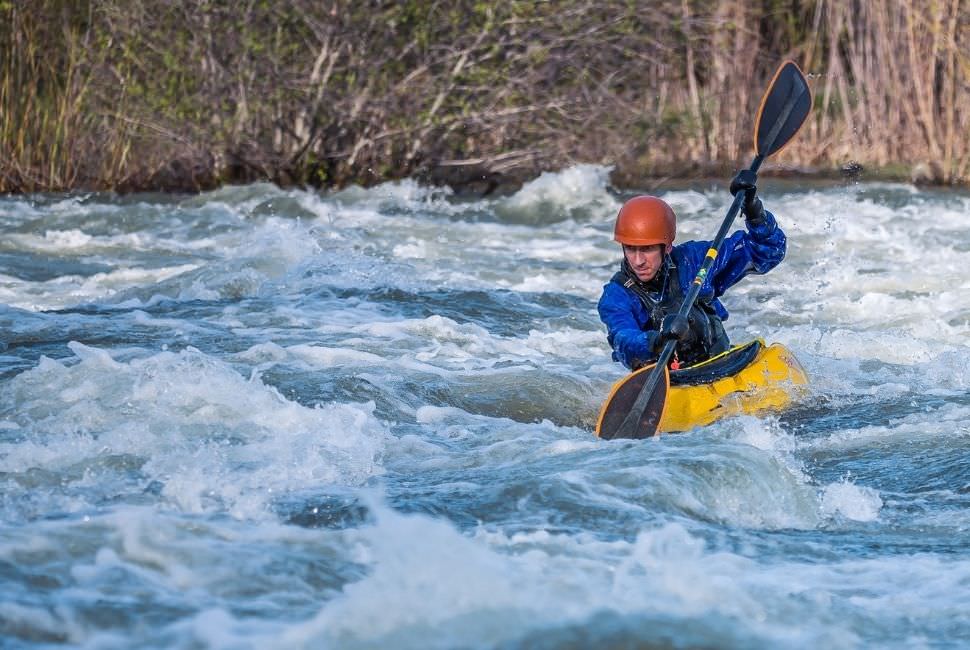Last Updated on June 11, 2023 by Afsar
The story of kayaking spans thousands of years, reflecting our human relationship with nature and our instinct for adventure. Originating as a practical tool for survival, kayaking has evolved into a versatile recreational sport that connects us with water in a truly intimate way. Its history charts an incredible journey, transforming from a practical means of transport to a competitive and recreational activity enjoyed worldwide.
Origins: The Arctic Inuit
The kayak traces its roots back thousands of years to the indigenous Arctic Inuit people. The word ‘kayak’ derives from ‘qajaq’ in the Inuit language, literally translating to “man’s boat” or “hunter’s boat”. Crafted from a wooden or whalebone skeleton covered with sealskin, kayaks were lightweight, maneuverable, and virtually unsinkable. They were used mainly for hunting marine wildlife, such as seals, whales, and fish.
Their slim and sleek design allowed the Inuit hunters to glide silently across the frigid Arctic waters, unnoticed by their prey. The design of these primitive kayaks varied by region, reflecting the unique challenges and needs of different Inuit communities. Some were designed for speed, others for cargo capacity, and yet others for stability or maneuverability.
European Discovery and Adaptation
Europeans first encountered kayaks in the 17th century, and they quickly appreciated the boat’s exceptional design. They began importing them for study, and by the 18th century, kayaks were featuring in European museums. However, it wasn’t until the 19th century that the kayak saw its first recreational use in Europe.
German sportsman and explorer Johann Klepper was instrumental in popularizing the kayak in Europe. After encountering a folding kayak in 1905, he started a company to produce them. These kayaks were portable and affordable, allowing for their wider use and popularity.
The Birth of Modern Kayaking
The 20th century heralded a new era for kayaking, transforming it from a survival tool into a recreational and competitive sport. The establishment of the International Canoe Federation in 1946 and the inclusion of kayaking in the Olympic Games in Berlin in 1936 were critical steps in this transformation.
The 1950s brought another significant evolution in kayak design, as fiberglass replaced traditional wooden frames, making them more durable and lighter. Then, in the 1980s, the invention of plastic kayaks further revolutionized the sport, making it more accessible and affordable.
Kayaking Today: A Diverse Recreational Sport
Today, kayaking caters to a broad spectrum of enthusiasts. It has diversified into various forms such as whitewater kayaking, sea kayaking, recreational kayaking, surf kayaking, and more. Each of these disciplines has its own specialized kayak designs and equipment.
Sea kayaking often involves long-distance travel and expedition-style trips, similar to the original purpose of Inuit kayaks. Whitewater kayaking, on the other hand, is a thrilling sport that tests a paddler’s skill against rapids and waterfalls.
Kayak fishing has also gained popularity, marrying the quiet stealth of the kayak with the excitement of fishing. As well, kayak touring or recreational kayaking offers a peaceful way to enjoy nature, often used for bird watching, photography, or fitness.
Advancements in technology have also led to the creation of inflatable kayaks, folding kayaks, and even transparent kayaks, making the sport more accessible and offering unique ways to enjoy the water.
Conclusion
The evolution of kayaking reflects a fascinating interplay between practical need, innovation, and the human drive for adventure. From the sleek sealskin crafts of Inuit hunters to the high-tech, specialized equipment of today, kayaks continue to be a testament to human ingenuity and our enduring connection with the water. Despite these changes, the spirit of kayaking remains the same: a personal engagement with the water, propelled by the strength of our own paddling.
As we look towards the future of kayaking, we can only imagine what new innovations and uses lie ahead, but it is clear that this ancient craft will continue to adapt, inspire, and thrill for generations to come.

Afsar is an avid kayak blogger born near the coast. He has a passion for kayaking and started as a child. He has paddled in various conditions and locations and promotes responsible kayaking. Afsar’s blog is widely read, and they are a respected voice in the kayaking community, offering valuable content on kayaking trips, gear, tips, and tricks. Afsar collaborates with other bloggers and brands and continues to inspire others through their writing and social media.

